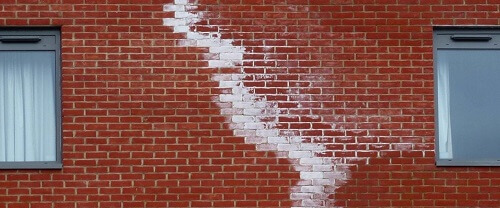Ever wonder seeing some sudden white fuzzy stuff on the surface of your structure like the wall, brick, ceiling, etc. and uttering yourself “from where is this white stranger?” Well, if you experienced so, this post is for you. This fuzzy stuff is called efflorescence.
What is Efflorescence? - Efflorescence Meaning
The word efflorescence means ‘To flower out’ in French. But here, there is some salt ‘flowering out’ from your structure. This is a typical and most frequent problem that contractors face especially in the case of colored concrete and bricks.
Efflorescence is the salt deposit that forms on the surface of concrete, brick, stone, or wall. Water presence is the prerequisite in the formation of the salts. After evaporation of water, the salt left behind on the surface. the salt is white or greyish in color.
From an esthetic problem to structural damage, all can result from efflorescence. To protect any important surface from efflorescence, all preventive measures should be taken. If appeared, it should be treated immediately.
Read the following articles to learn all the prevention and removing technique of efflorescence.
Following is an image of efflorescence on a brick wall.

What Causes Efflorescence - The Story Behind Its Formation
Basically efflorescence is a deposition of crystalline salt inside or outside of the structure. If you see any efflorescence then there must be a water contact or water presence in the concrete. It is caused when water with any soluble salts comes to the surface through capillary action and then vaporizes. While vaporizing, it leaves the salt and basically what we see as efflorescence, is this leftover salt. This can happen for various reasons like moist conditions, rain, dew, or any external or internal water. Casting the concrete with salty water can be another reason behind this. {adselite}
Let’s look inside for another chemical mechanism. Sometimes through hydration reaction, calcium hydroxide or lime is formed from Portland cement which is transported by water to the surface. Then it reacts with carbon dioxide from the air and produces calcium carbonate and at the end can cause efflorescence. That’s why any material having Portland cement can cause efflorescence.
Besides, hydroxides or sulfates of potassium or sodium can create efflorescence which can come from cement, water, aggregate, or even admixtures. They form faster efflorescence than calcium.
Types of Efflorescence
There are two types of Efflorescence.
Primary Efflorescence
This is the first type of efflorescence that happens when concrete is in the curing phase. If water comes out to the surface with soluble mineral or lime, we see primary efflorescence.
Secondary Efflorescence
It doesn’t occur during concrete drying, rather it happens when some outside soluble salt gets contact with hardened concrete after a long time. Water or moistures from the environment, mixed with salts come to concrete and are absorbed and infiltrates over time. And then after a while, white or grey matter appears.

